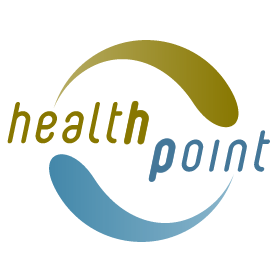Central Auckland, East Auckland, North Auckland, South Auckland, West Auckland > Private Hospitals & Specialists >
Astra Radiology
Private Service, Radiology, Pregnancy Ultrasound
Today
Ascot Central, 7 Ellerslie Racecourse Drive, Remuera, Auckland
8:30 AM to 5:00 PM.
Description
- the most up-to-date imaging technology
- a team of hand-picked specialists who are experts in their field
- efficient, effective analysis of your images and longer appointment times, so you can get the answers you need
- a friendly and welcoming environment with a strong focus on customer care.
Read more about Astra Radiology here.
Services Offered by Location
| Barium Exams | CT | Dexa Bone Densitometry | Mammography | MRI | Obstetric Ultrasound | Pelvic (Gynae) Ultrasound | PET CT | Ultrasound | X-rays | |
| Ascot Hospital | ✔
Including Barium Meals/
|
✔ Including Virtual Colonoscopy, CT Coronary Angiography & Coronary Artery Calcium Scoring |
|
✔ | ✔ | ✔ | ✔ | ✔ | ||
| Ascot Central | ✔ | ✔ | ✔ | ✔ | ✔ | ✔ | ||||
| Greenlane Imaging | ✔ | |||||||||
| AUT Millenium | ✔ | ✔ | ✔ | ✔ | ✔ | ✔ | ||||
| Parnell | ✔ | ✔ | ||||||||
| Mauranui | ✔ | |||||||||
| St Heliers | ✔ | ✔ | ✔ | |||||||
| OneHealth, Remuera | ✔ | |||||||||
| Highland Park | ✔ |
- diagnose disease states, such as cancer or heart disease
- show the extent of injury to body structures
- to aid in interventional procedures, such as angiography.
- Medical Radiation Technologists (MRTs) or Radiographers perform your X-ray, barium and mammography examinations.
- Sonographers are MRTs who perform your ultrasound examinations.
- Radiologists are specialist doctors who read and understand your films. They will also be involved if you have an intravenous urogram (IVU), barium study, mammogram and a number of other ultrasound procedures. They interpret the results of the images and send them to your doctor.
Consultants
Note: Please note below that some people are not available at all locations.
-

Dr Graeme Anderson
Radiologist
Available at Allevia Hospital Ascot, 90 Green Lane East, Remuera, Auckland, Ascot Central, 7 Ellerslie Racecourse Drive, Remuera, Auckland, Mauranui Clinic, 86 Great South Road, Epsom, Auckland, 8-10 Turua Street, St Heliers, Auckland, OneHealth Building, 122 Remuera Road, Remuera, Auckland, 14 Highland Park Drive, Highland Park, Auckland
-

Dr Linda Ashley
Women's Imaging Radiologist
Available at Ascot Central, 7 Ellerslie Racecourse Drive, Remuera, Auckland, AUT Millennium, 17 Antares Place, Rosedale, Auckland, 20 Titoki Street, Parnell, Auckland, Mauranui Clinic, 86 Great South Road, Epsom, Auckland, 8-10 Turua Street, St Heliers, Auckland, OneHealth Building, 122 Remuera Road, Remuera, Auckland, 14 Highland Park Drive, Highland Park, Auckland
-
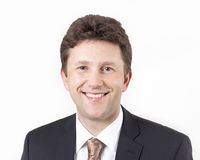
Dr David Davies-Payne
Paediatric Radiologist
Available at Allevia Hospital Ascot, 90 Green Lane East, Remuera, Auckland, Ascot Central, 7 Ellerslie Racecourse Drive, Remuera, Auckland, Mauranui Clinic, 86 Great South Road, Epsom, Auckland, 8-10 Turua Street, St Heliers, Auckland, OneHealth Building, 122 Remuera Road, Remuera, Auckland, 14 Highland Park Drive, Highland Park, Auckland
-
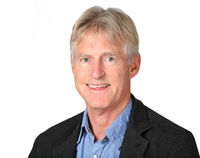
Dr Richard Davis
Radiologist
Available at Ascot Central, 7 Ellerslie Racecourse Drive, Remuera, Auckland, AUT Millennium, 17 Antares Place, Rosedale, Auckland, 20 Titoki Street, Parnell, Auckland, 8-10 Turua Street, St Heliers, Auckland, OneHealth Building, 122 Remuera Road, Remuera, Auckland, 14 Highland Park Drive, Highland Park, Auckland
-
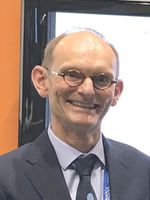
Dr Anthony Doyle
Radiologist
Available at Allevia Hospital Ascot, 90 Green Lane East, Remuera, Auckland, Ascot Central, 7 Ellerslie Racecourse Drive, Remuera, Auckland, AUT Millennium, 17 Antares Place, Rosedale, Auckland, Mauranui Clinic, 86 Great South Road, Epsom, Auckland, 8-10 Turua Street, St Heliers, Auckland, OneHealth Building, 122 Remuera Road, Remuera, Auckland, 14 Highland Park Drive, Highland Park, Auckland
-
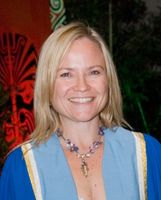
Dr Emma Ellis
Obstetrician & Gynaecologist
Available at Allevia Hospital Ascot, 90 Green Lane East, Remuera, Auckland, Ascot Central, 7 Ellerslie Racecourse Drive, Remuera, Auckland, Mauranui Clinic, 86 Great South Road, Epsom, Auckland, 8-10 Turua Street, St Heliers, Auckland, OneHealth Building, 122 Remuera Road, Remuera, Auckland, 14 Highland Park Drive, Highland Park, Auckland
-

Dr Rebecca Hall
Radiologist
Available at Ascot Central, 7 Ellerslie Racecourse Drive, Remuera, Auckland, Mauranui Clinic, 86 Great South Road, Epsom, Auckland, 8-10 Turua Street, St Heliers, Auckland, OneHealth Building, 122 Remuera Road, Remuera, Auckland, 14 Highland Park Drive, Highland Park, Auckland
-

Dr Henry Kwok
Radiologist
Available at Allevia Hospital Ascot, 90 Green Lane East, Remuera, Auckland, Ascot Central, 7 Ellerslie Racecourse Drive, Remuera, Auckland, Mauranui Clinic, 86 Great South Road, Epsom, Auckland, 8-10 Turua Street, St Heliers, Auckland, OneHealth Building, 122 Remuera Road, Remuera, Auckland, 14 Highland Park Drive, Highland Park, Auckland
-

Dr David Milne
Radiologist
Available at Allevia Hospital Ascot, 90 Green Lane East, Remuera, Auckland, Ascot Central, 7 Ellerslie Racecourse Drive, Remuera, Auckland, Mauranui Clinic, 86 Great South Road, Epsom, Auckland, 8-10 Turua Street, St Heliers, Auckland, OneHealth Building, 122 Remuera Road, Remuera, Auckland, 14 Highland Park Drive, Highland Park, Auckland
-

Dr Christopher Occleshaw
Cardiac Radiologist
Available at Allevia Hospital Ascot, 90 Green Lane East, Remuera, Auckland, Ascot Central, 7 Ellerslie Racecourse Drive, Remuera, Auckland, Mauranui Clinic, 86 Great South Road, Epsom, Auckland, 8-10 Turua Street, St Heliers, Auckland, OneHealth Building, 122 Remuera Road, Remuera, Auckland, 14 Highland Park Drive, Highland Park, Auckland
-

Dr Simone Oldham
Radiologist
Available at Ascot Central, 7 Ellerslie Racecourse Drive, Remuera, Auckland
-

Dr Melanie Rees
Radiologist
Available at Allevia Hospital Ascot, 90 Green Lane East, Remuera, Auckland, Ascot Central, 7 Ellerslie Racecourse Drive, Remuera, Auckland, Mauranui Clinic, 86 Great South Road, Epsom, Auckland, 8-10 Turua Street, St Heliers, Auckland, OneHealth Building, 122 Remuera Road, Remuera, Auckland, 14 Highland Park Drive, Highland Park, Auckland
-

Dr David Rogers
Radiologist
Available at Allevia Hospital Ascot, 90 Green Lane East, Remuera, Auckland, Ascot Central, 7 Ellerslie Racecourse Drive, Remuera, Auckland, AUT Millennium, 17 Antares Place, Rosedale, Auckland, Mauranui Clinic, 86 Great South Road, Epsom, Auckland, 8-10 Turua Street, St Heliers, Auckland, OneHealth Building, 122 Remuera Road, Remuera, Auckland, 14 Highland Park Drive, Highland Park, Auckland
-

Dr Raymond Tai
Radiologist
Available at Allevia Hospital Ascot, 90 Green Lane East, Remuera, Auckland, Ascot Central, 7 Ellerslie Racecourse Drive, Remuera, Auckland, Mauranui Clinic, 86 Great South Road, Epsom, Auckland, 8-10 Turua Street, St Heliers, Auckland, OneHealth Building, 122 Remuera Road, Remuera, Auckland, 14 Highland Park Drive, Highland Park, Auckland
-

Dr Christina Tieu
Obstetrician
Available at Allevia Hospital Ascot, 90 Green Lane East, Remuera, Auckland, Ascot Central, 7 Ellerslie Racecourse Drive, Remuera, Auckland, 8-10 Turua Street, St Heliers, Auckland, OneHealth Building, 122 Remuera Road, Remuera, Auckland, 14 Highland Park Drive, Highland Park, Auckland
-

Dr Chris Tregonning
Radiologist
Available at Allevia Hospital Ascot, 90 Green Lane East, Remuera, Auckland, Ascot Central, 7 Ellerslie Racecourse Drive, Remuera, Auckland, 8-10 Turua Street, St Heliers, Auckland, OneHealth Building, 122 Remuera Road, Remuera, Auckland, 14 Highland Park Drive, Highland Park, Auckland
-
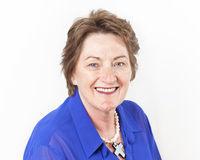
Dr Sally Urry
Radiologist
Available at Allevia Hospital Ascot, 90 Green Lane East, Remuera, Auckland, Ascot Central, 7 Ellerslie Racecourse Drive, Remuera, Auckland, Mauranui Clinic, 86 Great South Road, Epsom, Auckland, 8-10 Turua Street, St Heliers, Auckland, OneHealth Building, 122 Remuera Road, Remuera, Auckland, 14 Highland Park Drive, Highland Park, Auckland
-

Dr Niels van Pelt
Cardiologist
Available at Allevia Hospital Ascot, 90 Green Lane East, Remuera, Auckland, Ascot Central, 7 Ellerslie Racecourse Drive, Remuera, Auckland, OneHealth Building, 122 Remuera Road, Remuera, Auckland, 14 Highland Park Drive, Highland Park, Auckland
-

Dr Katie Vickery
Radiologist
Available at Allevia Hospital Ascot, 90 Green Lane East, Remuera, Auckland
-
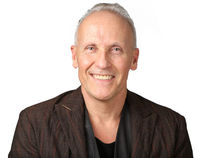
Dr Philip Weeks
Radiologist
Available at Allevia Hospital Ascot, 90 Green Lane East, Remuera, Auckland, Ascot Central, 7 Ellerslie Racecourse Drive, Remuera, Auckland, AUT Millennium, 17 Antares Place, Rosedale, Auckland, Mauranui Clinic, 86 Great South Road, Epsom, Auckland, 8-10 Turua Street, St Heliers, Auckland, OneHealth Building, 122 Remuera Road, Remuera, Auckland, 14 Highland Park Drive, Highland Park, Auckland
-

Dr Katherine Wood
Radiologist
Available at Ascot Central, 7 Ellerslie Racecourse Drive, Remuera, Auckland, Mauranui Clinic, 86 Great South Road, Epsom, Auckland, 8-10 Turua Street, St Heliers, Auckland, OneHealth Building, 122 Remuera Road, Remuera, Auckland, 14 Highland Park Drive, Highland Park, Auckland
Referral Expectations
Information for Referrers
If you are a medical professional please click here to find the comprehensive set of tools available to help you and your patients be as informed as possible.
Information for Patients
For patients, please click here for procedure information.
Fees and Charges Description
All major credit cards are accepted including Visa, MasterCard and American Express.
You are also welcome to settle your account using EFTPOS or cash.
We are also a Southern Cross Affiliated provider for the following services:
- CT scans including coronary angiography (CTCA)
- MRI scans
- PET/CT scans
- Mammography
Hours
Ascot Central, 7 Ellerslie Racecourse Drive, Remuera, Auckland
8:30 AM to 5:00 PM.
| Mon – Fri | 8:30 AM – 5:00 PM |
|---|
Services Provided
An X-ray is a high frequency, high energy wave form. It cannot be seen with the naked eye, but can be picked up on photographic film. Although you may think of an X-ray as a picture of bones, a trained observer can also see air spaces, like the lungs (which look black) and fluid (which looks white, but not as white as bones). What to expect? You will have all metal objects removed from your body. You will be asked to remain still in a specific position and hold your breath on command. There are staff present, but they will not necessarily remain in the room, but will speak with you via an intercom system and will be viewing the procedure constantly through a windowed control room. The examination time will vary depending on the type of procedure required, but as a rule it will take around 30 minutes. Read more about x-rays here.
An X-ray is a high frequency, high energy wave form. It cannot be seen with the naked eye, but can be picked up on photographic film. Although you may think of an X-ray as a picture of bones, a trained observer can also see air spaces, like the lungs (which look black) and fluid (which looks white, but not as white as bones). What to expect? You will have all metal objects removed from your body. You will be asked to remain still in a specific position and hold your breath on command. There are staff present, but they will not necessarily remain in the room, but will speak with you via an intercom system and will be viewing the procedure constantly through a windowed control room. The examination time will vary depending on the type of procedure required, but as a rule it will take around 30 minutes. Read more about x-rays here.
An X-ray is a high frequency, high energy wave form. It cannot be seen with the naked eye, but can be picked up on photographic film. Although you may think of an X-ray as a picture of bones, a trained observer can also see air spaces, like the lungs (which look black) and fluid (which looks white, but not as white as bones).
What to expect?
You will have all metal objects removed from your body. You will be asked to remain still in a specific position and hold your breath on command. There are staff present, but they will not necessarily remain in the room, but will speak with you via an intercom system and will be viewing the procedure constantly through a windowed control room.
The examination time will vary depending on the type of procedure required, but as a rule it will take around 30 minutes.
Read more about x-rays here.
With CT you can differentiate many more things than with a normal X-ray. A CT image is created by using an X-ray beam, which is sent through the body from different angles, and by using a complicated mathematical process the computer of the CT is able to produce an image. This allows cross-sectional images of the body without cutting it open. The CT is used to view all body structures but especially soft tissue such as body organs (heart, lungs, liver etc.). What to expect? You will have all metal objects removed from your body. You will lie down on a narrow padded moveable table that will be slid into the scanner, through a circular opening. You will feel nothing while the scan is in progress, but some people can feel slightly claustrophobic or closed in, whilst inside the scanner. You will be asked to remain still and hold your breath on command. There are staff present, but they will not necessarily remain in the room, but will speak with you via an intercom system and will be viewing the procedure constantly through a windowed control room, from where they will run the scanner. Some procedures will require Contrast Medium. Contrast medium is a substance that makes the image of the CT or MRI clearer. Contrast medium can be given by mouth, rectally, or by injection into the bloodstream.v The scan time will vary depending on the type of examination required, but as a rule it will take around 30 minutes.
With CT you can differentiate many more things than with a normal X-ray. A CT image is created by using an X-ray beam, which is sent through the body from different angles, and by using a complicated mathematical process the computer of the CT is able to produce an image. This allows cross-sectional images of the body without cutting it open. The CT is used to view all body structures but especially soft tissue such as body organs (heart, lungs, liver etc.). What to expect? You will have all metal objects removed from your body. You will lie down on a narrow padded moveable table that will be slid into the scanner, through a circular opening. You will feel nothing while the scan is in progress, but some people can feel slightly claustrophobic or closed in, whilst inside the scanner. You will be asked to remain still and hold your breath on command. There are staff present, but they will not necessarily remain in the room, but will speak with you via an intercom system and will be viewing the procedure constantly through a windowed control room, from where they will run the scanner. Some procedures will require Contrast Medium. Contrast medium is a substance that makes the image of the CT or MRI clearer. Contrast medium can be given by mouth, rectally, or by injection into the bloodstream.v The scan time will vary depending on the type of examination required, but as a rule it will take around 30 minutes.
With CT you can differentiate many more things than with a normal X-ray. A CT image is created by using an X-ray beam, which is sent through the body from different angles, and by using a complicated mathematical process the computer of the CT is able to produce an image. This allows cross-sectional images of the body without cutting it open. The CT is used to view all body structures but especially soft tissue such as body organs (heart, lungs, liver etc.).
What to expect?
You will have all metal objects removed from your body. You will lie down on a narrow padded moveable table that will be slid into the scanner, through a circular opening.
You will feel nothing while the scan is in progress, but some people can feel slightly claustrophobic or closed in, whilst inside the scanner. You will be asked to remain still and hold your breath on command. There are staff present, but they will not necessarily remain in the room, but will speak with you via an intercom system and will be viewing the procedure constantly through a windowed control room, from where they will run the scanner.
Some procedures will require Contrast Medium. Contrast medium is a substance that makes the image of the CT or MRI clearer. Contrast medium can be given by mouth, rectally, or by injection into the bloodstream.v
The scan time will vary depending on the type of examination required, but as a rule it will take around 30 minutes.
An MRI machine does not work like an X-ray or CT; it is used for exact images of internal organs and body structures. This method delivers clear images without the exposure of radiation. The procedure uses a combination of magnetic fields and radio waves which results in an image being made using the MRI’s computer. What to expect? You will have all metal objects removed from your body. You will lie down on a narrow padded moveable table that will be slid into the scanner, through a circular opening. You will feel nothing while the scan is in progress, but some people can feel slightly claustrophobic or closed in, whilst inside the scanner. You will be asked to remain still and hold your breath on command. There are staff present, but they will not necessarily remain in the room, but will speak with you via an intercom system and will be viewing the procedure constantly through a windowed control room, from where they will run the scanner. Some procedures will require Contrast Medium. Contrast medium is a substance that makes the image of the CT or MRI clearer. Contrast can be given by mouth, rectally, or by injection into the bloodstream. The scan time will vary depending on the type of examination required, but as a rule it will take around 30 minutes.
An MRI machine does not work like an X-ray or CT; it is used for exact images of internal organs and body structures. This method delivers clear images without the exposure of radiation. The procedure uses a combination of magnetic fields and radio waves which results in an image being made using the MRI’s computer. What to expect? You will have all metal objects removed from your body. You will lie down on a narrow padded moveable table that will be slid into the scanner, through a circular opening. You will feel nothing while the scan is in progress, but some people can feel slightly claustrophobic or closed in, whilst inside the scanner. You will be asked to remain still and hold your breath on command. There are staff present, but they will not necessarily remain in the room, but will speak with you via an intercom system and will be viewing the procedure constantly through a windowed control room, from where they will run the scanner. Some procedures will require Contrast Medium. Contrast medium is a substance that makes the image of the CT or MRI clearer. Contrast can be given by mouth, rectally, or by injection into the bloodstream. The scan time will vary depending on the type of examination required, but as a rule it will take around 30 minutes.
An MRI machine does not work like an X-ray or CT; it is used for exact images of internal organs and body structures. This method delivers clear images without the exposure of radiation.
The procedure uses a combination of magnetic fields and radio waves which results in an image being made using the MRI’s computer.
What to expect?
You will have all metal objects removed from your body. You will lie down on a narrow padded moveable table that will be slid into the scanner, through a circular opening.
You will feel nothing while the scan is in progress, but some people can feel slightly claustrophobic or closed in, whilst inside the scanner. You will be asked to remain still and hold your breath on command. There are staff present, but they will not necessarily remain in the room, but will speak with you via an intercom system and will be viewing the procedure constantly through a windowed control room, from where they will run the scanner.
Some procedures will require Contrast Medium. Contrast medium is a substance that makes the image of the CT or MRI clearer. Contrast can be given by mouth, rectally, or by injection into the bloodstream.
The scan time will vary depending on the type of examination required, but as a rule it will take around 30 minutes.
In ultrasound, a beam of sound at a very high frequency (that cannot be heard) is sent into the body from a small vibrating crystal in a hand-held scanner head. When the beam meets a surface between tissues of different density, echoes of the sound beam are sent back into the scanner head. The time between sending the sound and receiving the echo back is fed into a computer, which in turn creates an image that is projected on a television screen. Ultrasound is a very safe type of imaging; this is why it is so widely used during pregnancy. Doppler ultrasound A Doppler study is a noninvasive test that can be used to evaluate blood flow by bouncing high-frequency sound waves (ultrasound) off red blood cells. The Doppler Effect is a change in the frequency of sound waves caused by moving objects. A Doppler study can estimate how fast blood flows by measuring the rate of change in its pitch (frequency). A Doppler study can help diagnose bloody clots, heart and leg valve problems and blocked or narrowed arteries. What to expect? After lying down, the area to be examined will be exposed. Generally a contact gel will be used between the scanner head and skin. The scanner head is then pressed against your skin and moved around and over the area to be examined. At the same time the internal images will appear onto a screen.
In ultrasound, a beam of sound at a very high frequency (that cannot be heard) is sent into the body from a small vibrating crystal in a hand-held scanner head. When the beam meets a surface between tissues of different density, echoes of the sound beam are sent back into the scanner head. The time between sending the sound and receiving the echo back is fed into a computer, which in turn creates an image that is projected on a television screen. Ultrasound is a very safe type of imaging; this is why it is so widely used during pregnancy. Doppler ultrasound A Doppler study is a noninvasive test that can be used to evaluate blood flow by bouncing high-frequency sound waves (ultrasound) off red blood cells. The Doppler Effect is a change in the frequency of sound waves caused by moving objects. A Doppler study can estimate how fast blood flows by measuring the rate of change in its pitch (frequency). A Doppler study can help diagnose bloody clots, heart and leg valve problems and blocked or narrowed arteries. What to expect? After lying down, the area to be examined will be exposed. Generally a contact gel will be used between the scanner head and skin. The scanner head is then pressed against your skin and moved around and over the area to be examined. At the same time the internal images will appear onto a screen.
In ultrasound, a beam of sound at a very high frequency (that cannot be heard) is sent into the body from a small vibrating crystal in a hand-held scanner head. When the beam meets a surface between tissues of different density, echoes of the sound beam are sent back into the scanner head. The time between sending the sound and receiving the echo back is fed into a computer, which in turn creates an image that is projected on a television screen. Ultrasound is a very safe type of imaging; this is why it is so widely used during pregnancy.
Doppler ultrasound
A Doppler study is a noninvasive test that can be used to evaluate blood flow by bouncing high-frequency sound waves (ultrasound) off red blood cells. The Doppler Effect is a change in the frequency of sound waves caused by moving objects. A Doppler study can estimate how fast blood flows by measuring the rate of change in its pitch (frequency). A Doppler study can help diagnose bloody clots, heart and leg valve problems and blocked or narrowed arteries.
What to expect?
After lying down, the area to be examined will be exposed. Generally a contact gel will be used between the scanner head and skin. The scanner head is then pressed against your skin and moved around and over the area to be examined. At the same time the internal images will appear onto a screen.
Ultrasound imaging, also called ultrasound scanning, is a method of obtaining pictures from inside the human body through the use of high frequency sound waves. Obstetric ultrasound refers to the specialised use of this technique to produce a picture of your unborn baby while it is inside your uterus (womb). The sound waves are emitted from a hand-held nozzle, which is placed on your stomach, and reflection of these sound waves is displayed as a picture of the moving foetus (unborn baby) on a monitor screen. No x-rays are involved in ultrasound imaging. Measurements of the image of the foetus help in the assessment of its size and growth as well as confirming the due date of delivery.
Ultrasound imaging, also called ultrasound scanning, is a method of obtaining pictures from inside the human body through the use of high frequency sound waves. Obstetric ultrasound refers to the specialised use of this technique to produce a picture of your unborn baby while it is inside your uterus (womb). The sound waves are emitted from a hand-held nozzle, which is placed on your stomach, and reflection of these sound waves is displayed as a picture of the moving foetus (unborn baby) on a monitor screen. No x-rays are involved in ultrasound imaging. Measurements of the image of the foetus help in the assessment of its size and growth as well as confirming the due date of delivery.
Ultrasound imaging, also called ultrasound scanning, is a method of obtaining pictures from inside the human body through the use of high frequency sound waves. Obstetric ultrasound refers to the specialised use of this technique to produce a picture of your unborn baby while it is inside your uterus (womb).
The sound waves are emitted from a hand-held nozzle, which is placed on your stomach, and reflection of these sound waves is displayed as a picture of the moving foetus (unborn baby) on a monitor screen.
No x-rays are involved in ultrasound imaging. Measurements of the image of the foetus help in the assessment of its size and growth as well as confirming the due date of delivery.
A mammogram is a special type of x-ray used only for the breast. Mammography can be used either to look for very early breast cancer in women without breast symptoms (screening) or to examine women who do have breast symptoms (diagnostic). What to expect? You will need to undress from the waist up. One of your breasts will be positioned between two plastic plates which will flatten the breast slightly. Most women find that this is a bit uncomfortable, but not painful. Generally two x-rays are taken of each breast. It is also useful to compare the results with earlier examinations and you should take any previous mammography results with you.
A mammogram is a special type of x-ray used only for the breast. Mammography can be used either to look for very early breast cancer in women without breast symptoms (screening) or to examine women who do have breast symptoms (diagnostic). What to expect? You will need to undress from the waist up. One of your breasts will be positioned between two plastic plates which will flatten the breast slightly. Most women find that this is a bit uncomfortable, but not painful. Generally two x-rays are taken of each breast. It is also useful to compare the results with earlier examinations and you should take any previous mammography results with you.
A mammogram is a special type of x-ray used only for the breast. Mammography can be used either to look for very early breast cancer in women without breast symptoms (screening) or to examine women who do have breast symptoms (diagnostic).
What to expect?
You will need to undress from the waist up. One of your breasts will be positioned between two plastic plates which will flatten the breast slightly. Most women find that this is a bit uncomfortable, but not painful. Generally two x-rays are taken of each breast. It is also useful to compare the results with earlier examinations and you should take any previous mammography results with you.
DEXA (which stands for dual energy x-ray absorptiometry) scanning uses special x-rays to measure the density of your bones. The density of your bones will show how strong they are. The exposure to x-rays is very low and is similar to what you would receive on a long distance plane flight. What to expect? You will lie very still on a padded table for 5-10 minutes while the arm of the machine passes over the area to be measured (usually the lower spine and hip, although the forearm can also be measured). This is quite painless. You can remain in your normal clothing, although you may have to take off anything with large buttons, buckles or metal zips.
DEXA (which stands for dual energy x-ray absorptiometry) scanning uses special x-rays to measure the density of your bones. The density of your bones will show how strong they are. The exposure to x-rays is very low and is similar to what you would receive on a long distance plane flight. What to expect? You will lie very still on a padded table for 5-10 minutes while the arm of the machine passes over the area to be measured (usually the lower spine and hip, although the forearm can also be measured). This is quite painless. You can remain in your normal clothing, although you may have to take off anything with large buttons, buckles or metal zips.
DEXA (which stands for dual energy x-ray absorptiometry) scanning uses special x-rays to measure the density of your bones. The density of your bones will show how strong they are. The exposure to x-rays is very low and is similar to what you would receive on a long distance plane flight.
What to expect?
You will lie very still on a padded table for 5-10 minutes while the arm of the machine passes over the area to be measured (usually the lower spine and hip, although the forearm can also be measured). This is quite painless.
You can remain in your normal clothing, although you may have to take off anything with large buttons, buckles or metal zips.
A combination of two types of scans: PET (Positron Emission Tomography) and CT (Computed Tomography). The PET scan shows how organs and tissues are working, while the CT scan shows detailed pictures of their structure. Together, they help doctors diagnose and monitor diseases like cancer. Read about PET CT here.
A combination of two types of scans: PET (Positron Emission Tomography) and CT (Computed Tomography). The PET scan shows how organs and tissues are working, while the CT scan shows detailed pictures of their structure. Together, they help doctors diagnose and monitor diseases like cancer. Read about PET CT here.
A combination of two types of scans: PET (Positron Emission Tomography) and CT (Computed Tomography). The PET scan shows how organs and tissues are working, while the CT scan shows detailed pictures of their structure. Together, they help doctors diagnose and monitor diseases like cancer.
Read about PET CT here.
Special pictures of the inside of the breast are taken to check for any problems. It can include mammograms, tomosynthesis (3D mammograms), ultrasounds, and magnetic resonance imaging (MRI).
Special pictures of the inside of the breast are taken to check for any problems. It can include mammograms, tomosynthesis (3D mammograms), ultrasounds, and magnetic resonance imaging (MRI).
Special pictures of the inside of the breast are taken to check for any problems. It can include mammograms, tomosynthesis (3D mammograms), ultrasounds, and magnetic resonance imaging (MRI).
Public Transport
The https://at.govt.nz/bus-train-ferry/ website is a good resource to plan your public transport options.
Pharmacy
Website
Contact Details
Ascot Central, 7 Ellerslie Racecourse Drive, Remuera, Auckland
Central Auckland
8:30 AM to 5:00 PM.
-
Phone
(09) 555 9550
Healthlink EDI
ascotrad
Email
Website
MRI • ULTRASOUND • MAMMOGRAPHY • DEXA BONE DENSITOMETRY
PET-CT: EMAIL: pet@astraradiology.co.nz TEL: (09) 520 9552
GREEN LANE IMAGING (CT SCANNING)
EMAIL: gli@astraradiology.co.nz. TEL:
(09) 520 9552
Ground Floor
7 Ellerslie Racecourse Drive
Remuera
Auckland 1051
Street Address
Ground Floor
7 Ellerslie Racecourse Drive
Remuera
Auckland 1051
Postal Address
PO Box 28 268
Remuera
Auckland 1541
Allevia Hospital Ascot, 90 Green Lane East, Remuera, Auckland
Central Auckland
8:30 AM to 4:30 PM.
-
Phone
(09) 520 9550
Healthlink EDI
ascotrad
Email
Website
AUT Millennium, 17 Antares Place, Rosedale, Auckland
North Auckland
8:30 AM to 5:00 PM.
-
Phone
(09) 520 9550
Healthlink EDI
ascotrad
Email
Website
20 Titoki Street, Parnell, Auckland
Central Auckland
8:30 AM to 5:00 PM.
-
Phone
(09) 520 9550
Healthlink EDI
ascotrad
Email
Website
Mauranui Clinic, 86 Great South Road, Epsom, Auckland
Central Auckland
8:30 AM to 4:30 PM.
-
Phone
(09) 520 9550
Healthlink EDI
ascotrad
Email
Website
8-10 Turua Street, St Heliers, Auckland
Central Auckland
8:30 AM to 4:30 PM.
-
Phone
(09) 520 9550
Healthlink EDI
ascotrad
Email
Website
OneHealth Building, 122 Remuera Road, Remuera, Auckland
Central Auckland
8:30 AM to 5:00 PM.
-
Phone
(09) 520 9550
Healthlink EDI
ascotrad
Email
Website
14 Highland Park Drive, Highland Park, Auckland
East Auckland
8:30 AM to 4:30 PM.
-
Phone
(09) 520 9550
Healthlink EDI
ascotrad
Email
Website
Was this page helpful?
This page was last updated at 12:51PM on June 11, 2025. This information is reviewed and edited by Astra Radiology.
